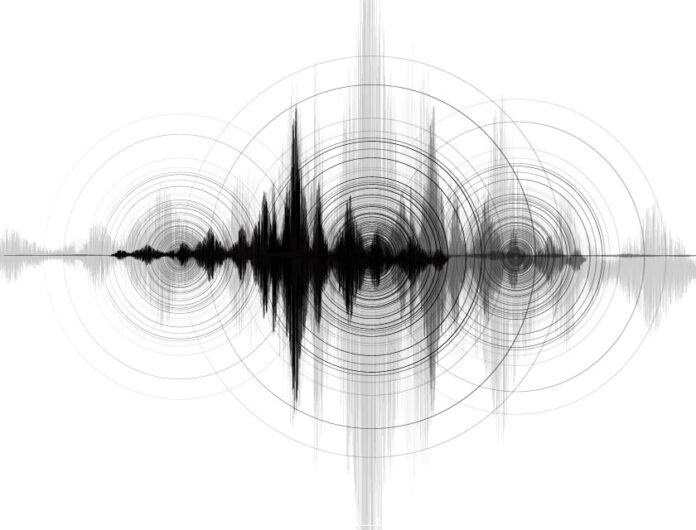एउटा उपन्यास आर्टिफिसियल इन्टेलिजेन्स दृष्टिकोणले भूकम्प पछि परकम्पको स्थानको भविष्यवाणी गर्न मद्दत गर्न सक्छ
An भूकंप is a phenomenon caused when rock underground in the पृथ्वीको crust suddenly breaks around a geological fault line. This causes rapid release of energy which produces seismic waves which then make the ground shake and this is the sensation we fell during an earthquake. The spot where the rock breaks is called focus of the भूकंप and place above it on ground is called ‘epicentre’. The energy released is measured as magnitude, a scale to describe how energetic was an earthquake. An earthquake of magnitude 2 is barely perceptible and can be recorded only by using sensitive specialized equipment, while भूकम्पहरू of more than magnitude 8 can cause the ground to noticeably shake very hard. An earthquake is generally followed by many aftershocks occurring by a similar mechanism and which are equally devasting and many times their intensity and severity is similar to the original earthquake. Such post-quake tremors occur generally within the first hour or a day after the main भूकंप. Forecasting spatial distribution of aftershocks is very challenging.
Scientists have formulated empirical laws to describe size and time of aftershocks but pinpointing their location is still a challenge. Researchers at Google and Harvard University have devised a new approach for assessing भूकम्पहरू and forecasting location of aftershocks using artificial intelligence technology in their study published in प्रकृति। तिनीहरूले विशेष रूपमा मेसिन लर्निङ प्रयोग गरे - कृत्रिम बुद्धिमत्ताको एक पक्ष। मेसिन लर्निङ दृष्टिकोणमा, मेसिनले डाटाको सेटबाट 'सिक्छ' र यो ज्ञान प्राप्त गरेपछि यो नयाँ डाटाको बारेमा भविष्यवाणी गर्न यो जानकारी प्रयोग गर्न सक्षम हुन्छ।
अन्वेषकहरूले पहिलो पटक गहिरो शिक्षा एल्गोरिदमहरू प्रयोग गरेर विश्वव्यापी भूकम्पहरूको डाटाबेसको विश्लेषण गरे। डीप लर्निङ एक उन्नत प्रकारको मेसिन लर्निङ हो जसमा न्यूरल नेटवर्कहरूले मानव मस्तिष्कको सोच्ने प्रक्रियाको नक्कल गर्ने प्रयास गर्छन्। अर्को, तिनीहरू सक्षम हुने लक्ष्य राख्छन् पूर्वानुमान aftershocks better than random guessing and try to solve the problem of ‘where’ the aftershocks will occur. Observations collected from more than 199 major earthquakes around the world were utilized consisting of around 131,000 mainshock-aftershock pairs. This information was combined with a physics-based model which describing how धरती would be strained and tense after an भूकंप which will then trigger aftershocks. They created 5 kilometer-square grids within which system would check for an aftershock. The neural network would then form relationships between strains caused by main earthquake and the location of aftershocks. Once neural network system was well-trained in this manner, it was able to predict location of aftershocks accurately. The study was extremely challenging as it used complex real-world data of earthquakes. Researchers alternatively set up कृत्रिम र 'आदर्श' भुकम्पको प्रकारको पूर्वानुमान सिर्जना गर्न र त्यसपछि भविष्यवाणीहरूको जाँच गरियो। न्यूरल नेटवर्क आउटपुट हेरेर, तिनीहरूले अफ्टरशकहरूको पूर्वानुमानलाई नियन्त्रण गर्न सक्ने विभिन्न 'मात्राहरू' को सम्भावना छ भनेर विश्लेषण गर्ने प्रयास गरे। स्थानिय तुलना गरिसकेपछि, अनुसन्धानकर्ताहरूले निष्कर्षमा पुगेका थिए कि सामान्य आफ्टरशक ढाँचा भौतिक रूपमा 'व्याख्यायोग्य' थियो। टोलीले सुझाव दिन्छ कि विचलन तनाव तनावको दोस्रो संस्करण भनिने मात्रा - जसलाई J2 भनिन्छ - कुञ्जी हो। यो मात्रा अत्यधिक व्याख्यायोग्य छ र नियमित रूपमा धातु विज्ञान र अन्य क्षेत्रहरूमा प्रयोग गरिन्छ तर भूकम्प अध्ययनको लागि पहिले कहिल्यै प्रयोग गरिएको थिएन।
Aftershocks of earthquakes cause further injuries, damage properties and also hinder rescue efforts therefore predicting them would be life-saving for humanity. Real time forecast may not be possible at this very moment as the current AI models can deal with a particular type of aftershock and simple geological fault line only. This is important because geological fault lines have different geometry in diverse geographical location on the ग्रह. So, it may not be currently applicable to different type of earthquakes around the world. Nevertheless, artificial intelligence technology looks suitable for earthquakes because of n number of variables which need to considered when studying them, example strength of the shock, position of tectonic plates etc.
तंत्रिका सञ्जालहरू समयसँगै सुधार गर्न डिजाइन गरिएका छन्, अर्थात् प्रणालीमा अधिक डेटा फिड हुँदा, थप सिक्ने ठाउँ लिन्छ र प्रणाली निरन्तर सुधार हुन्छ। भविष्यमा यस्तो प्रणाली भूकम्पविद्हरूले प्रयोग गर्ने भविष्यवाणी प्रणालीहरूको अभिन्न अंग हुन सक्छ। योजनाकारहरूले भूकम्प व्यवहारको ज्ञानको आधारमा आपतकालीन उपायहरू पनि लागू गर्न सक्छन्। टोलीले भूकम्पको म्याग्निच्युड अनुमान गर्न आर्टिफिसियल इन्टेलिजेन्स प्रविधि प्रयोग गर्न चाहन्छ।
***
{तपाइँले उद्धृत स्रोत(हरू) को सूचीमा दिइएको DOI लिङ्कमा क्लिक गरेर मूल अनुसन्धान पत्र पढ्न सक्नुहुन्छ}
स्रोत (हरू)
DeVries PMR et al। 2018. ठूला भूकम्प पछि परकम्प ढाँचाहरूको गहिरो शिक्षा। प्रकृति560 (7720)।
https://doi.org/10.1038/s41586-018-0438-y
***






































